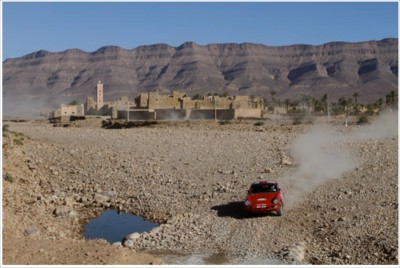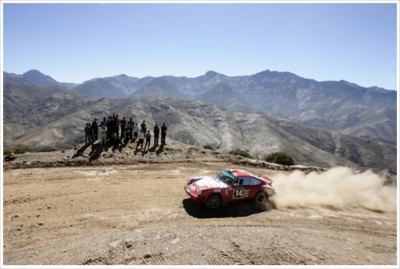I recently drove to Paris, to meet a Porsche on the Peking to Paris Motor Challenge. Lasting 37 days and 14,000 kilometres, and bringing competitors into countries normally closed to western traffic, Peking to Paris is the ultimate endurance rally.
Porsche 356 Peking Paris
Imagine arriving in China to find your rally Porsche waiting for you, along with one hundred other classic cars, from right across the world. Leaving Beijing, you race along the byways until you come to the Great Wall, where the Government have reopened a long-closed border gate, to allow the rally into Mongolia.
In Mongolia, you run the gauntlet of the Gobi Desert. Tents are pitched yards from the Trans-Siberia Express railway, with overnight temperatures dropping to -12 Celsius. After Mongolia you cross Turkmenistan, Uzbekistan, and into Iran, before roaring through Turkey and Greece, and arriving back in mainland Europe.
Weeks are spent driving tracks strewn with bunker-sized potholes and rocks like grapefruit, with what little time there is left after a 650km day’s rallying spent servicing or fire-fighting the latest mechanical disaster. Though I can visualise the whole thing in glorious technicolour through the windscreen of a classic 911, I may be choosing the wrong fantasy classic Porsche.
‘In inexperienced hands, a 911 can be too fast for this sort of event”, Francis Tuthill tells me. Francis is just back from the Morocco International Historic Rally, where three of his 911 rally cars finished in the top five.
Michele Mouton, rallying’s most successful female driver, was the first Tuthill Porsche pilot home, in a Safari car fitted with the ‘Challenge-spec’ 3-litre engine. These carburettor-fed engines, built for next year’s innovative ten-car Tuthill Rally Challenge, make a torque-rich 250 bhp. Despite her power disadvantage versus the winner, after nearly fifteen hours’ full-speed rallying, Mme Mouton finished second, just four minutes behind.
At the end of a trying first day, run over stages from the Paris-Dakar, Michele emerged assuming her 911 would be ruined, but was amazed to see that the car looked just as it had that morning, despite losing half an hour after a freak impact with a rock snapped off a brake caliper and wiped out the brakes.
The nature of good rally preparation on top of early 911 build quality, means these cars can take much more than you think. Nevertheless, when Francis built a car for the first Peking to Paris of recent times, in 1997, he chose a 356, as did my American/Australian friends on the most recent event. Lower power means the car can run on low-grade petrol, and the nimble little 356 steers clear of many obstacles that bigger cars cannot avoid.
Having driven through Asia on a number of endurance rallies, including the 1993 London-Sydney, which he won in a 911, Francis is well aware of the classic 911’s ability to outlast all comers. But, as we stand in the sunshine studying Lola, the WEVO-prepared Primrose 356C that has just won the post-1957 class of the 2010 Peking to Paris Rally, it’s clear that there’s more to taking a Porsche around the world than pure grunt. Success here is more about controlling the power you have, than how much you have to begin with.





0 Comments